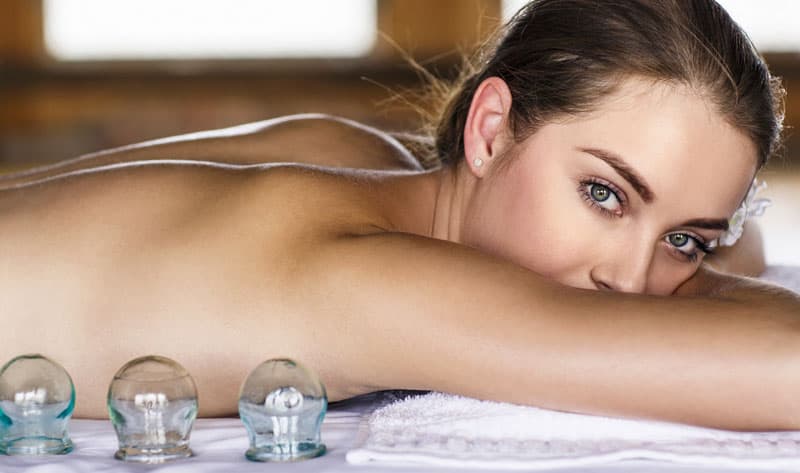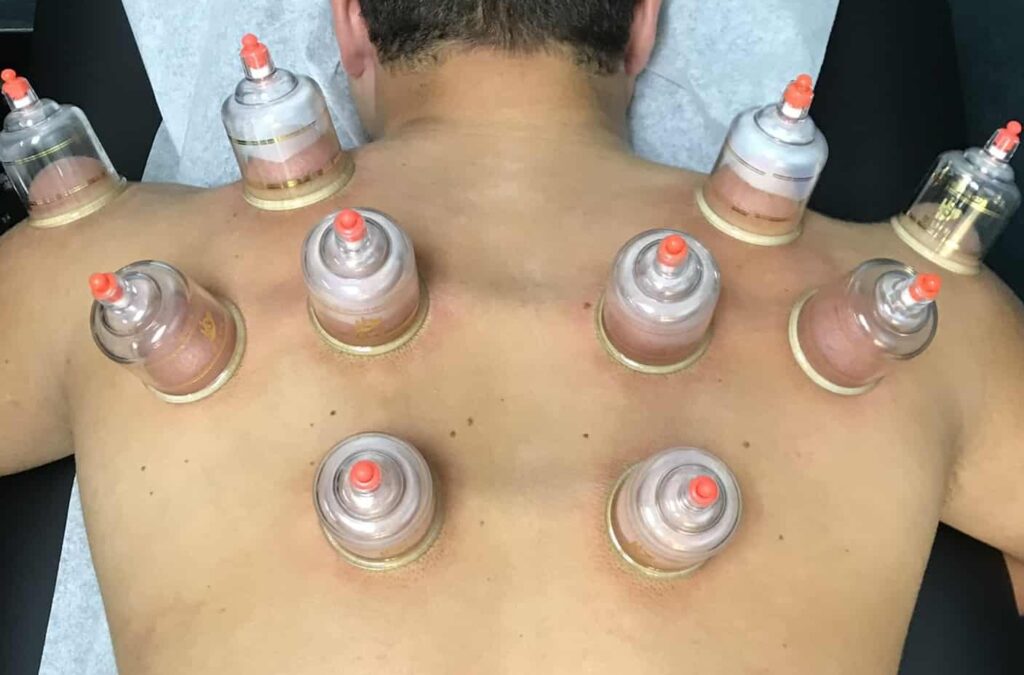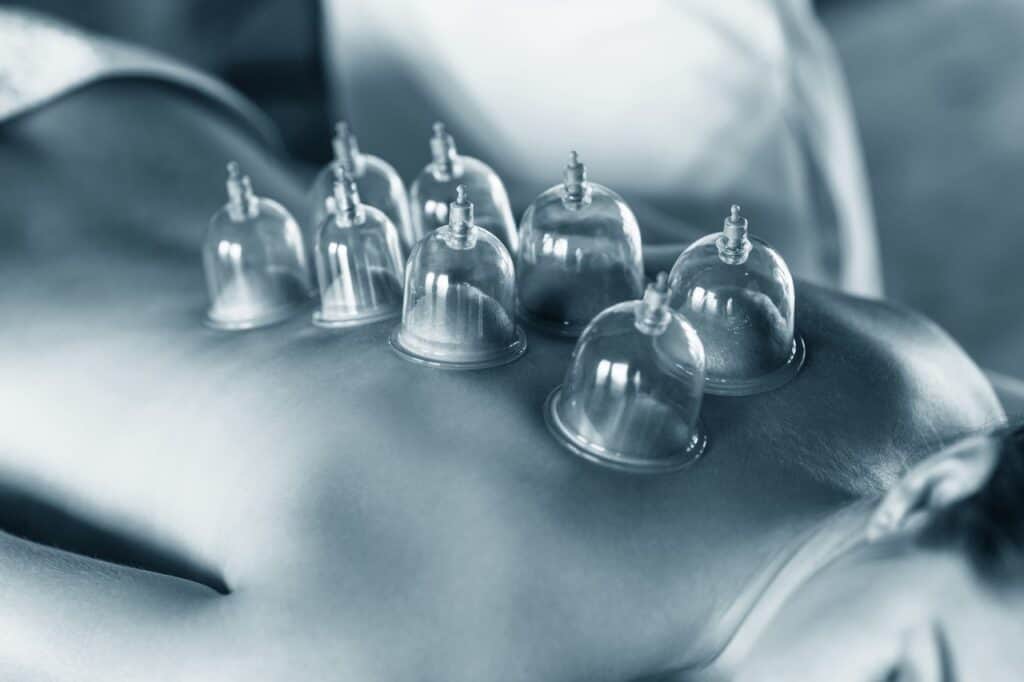Cupping Therapy
Effective, natural solutions for
full mind-body wellness.

CUPPING TREATMENTS
Cupping Can be Applied to Relieve
- Muscle Tension / Muscle Tightness
- Neck / Shoulder Stiffness
- Sports Injury
- Back Pain
- Anxiety
- Fatigue
- Brachialgia
- Cervical Spondylosis
- Facial Paralysis
- Asthma
- Migraines
- ...And More!
Who Is Cupping For?
Cupping is an inverse of massage—rather than applying pressure to the muscles, it uses gentle pressure to pull them upward. The suction pulls the tight muscles and stretches the fascia, the connective tissue around the muscles, and causes blood vessels to dilate. The theory is that the increased blood flow speeds muscular and soft tissue recovery and healing after strain. Cupping can promote blood and lymph circulation, relieve pain, and improve range of motion.
Cupping is a great recovery tool for workouts, exercise, and sports. Cupping has become popular outside of Asia since Michael Phelps, the most decorated Olympian of all time, appeared at the 2016 Rio Olympics with the red and purple round marks on his back. In the US, countless professional athletes, like Steph Curry and Tom Brady, are fans of cupping. The red post-cupping marks, which may last several days, are caused by temporary extravasation of blood from capillaries beneath the skin, and should not be confused as bruises.
Cupping is generally safe, but it should be administered by a skilled practitioner in a sterile and safe environment. At Asiana Wellness, we would choose the most appropriate cupping technique based on the patient’s constitution, complaints, and symptoms, under the direct supervision of Dr. Park.
Fire Cupping
This traditional Chinese medical technique is done by lighting flammable liquid in glass cups. The cups are warmed, then placed on affected parts of the body. The flame burns away the oxygen in the cup and creates a vacuum. Once the flame goes out, the vacuum gently pulls a layer of skin and muscle upward from the body and draws blood to the surface. This process stimulates muscles and blood flow, while relieving pain. For most patients, fire cupping provides a relaxing and therapeutic sensation.


Vacuum Cupping
In this traditional Chinese medicine procedure, the glass cups with valves are used. The valve attach to a handheld suction pump, which vacuums air from the cup. The vacuum pulls the skin into the cup, separating it from the tissues below and causing extravasation of blood from tiny vessels, the capillaries, stimulating the natural healing process.

